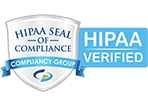How Long After An Accident Does It Take To Return To Your Normal Routine?
There’s no escaping the changes that happen after a car crash, even if it’s just a minor one. You’ll need to get your car to the shop and wait for repairs, get in touch with your insurance provider and wait for them to process your claim, and most importantly, you need to take time off and recover from any injuries. A single accident can put a significant hold on your once-ordinary life, but when does the waiting end?
Impact Medical Spring Hill is here to help you see the light at the end of the tunnel. We’ll go over the process of accident injury recovery so you have an idea of when you can start returning to your normal routine.
Every Situation Is Different. Ask Your Doctor!
You won’t find a catch-all timeframe of how long it takes to return to a normal life after an accident. Some people might be over it by a couple of weeks, and others may need a few extra months. Many factors determine your estimated recovery time, like the gravity of the accident and the severity of your injuries. While we don’t have an exact answer for you in this article, we can help you know what to expect so you can determine a timeframe on your own before seeing a doctor.
Reviewing General Timeframes For Auto Accident Recovery
When it comes to common auto accident injuries, there have been enough cases to gather the data needed for rough estimates. Although you shouldn’t take these estimated time frames to heart, it can help to have a general idea of what to expect.
Take a look at these common car crash injuries and their estimated recovery times:
- Whiplash – A few days to a few months
- Muscle pain – Up to a few weeks
- Sprains and strains – 6-8 weeks
- Cuts and scrapes – A few days to a couple of months
- Broken bones – A few weeks to 3 months
Of course, you should take these estimates with a grain of salt. Always go by what’s recommended by your doctor for your specific injuries. Your doctor will most likely suggest the right type of therapy to assist you after an accident, such as physical therapy or manual therapy.
When You Should Seek Urgent Care
Many accident injuries take time to heal, but there will be symptoms that require a sense of urgency. You will know to seek immediate help when you experience these vital signs:
- Loss of function
- Worsening pain
- Injuries that won’t heal
- Signs of infection
- Trouble sleeping
- Signs of fever
- Drastic mood swings
- Disruptions to your daily routine
Ways to Measure Your Healing Progress
Another way to tell how long it may take to return to normalcy is by taking note of milestones in your healing journey. You can take a mental note of improvements in your pain levels, mobility, and visual changes like rescinding cuts and bruises. You can also keep a journal to monitor the progress in your daily activities. If a certain task has become noticeably easier to do, write down the date and compare it to the day of your injury.
Read more > Is There a Secret to Faster Recovery After An Auto Accident?
Let Impact Medical Help Guide You Through a Speedy Recovery!
Impact Medical Spring Hill has the expert care and comprehensive services needed to assist you with a speedy recovery so you can return to your normal routine as soon as possible. Give our staff a call at 352-631-6512 to schedule a consultation appointment and start seeing progress in your life after an accident!
